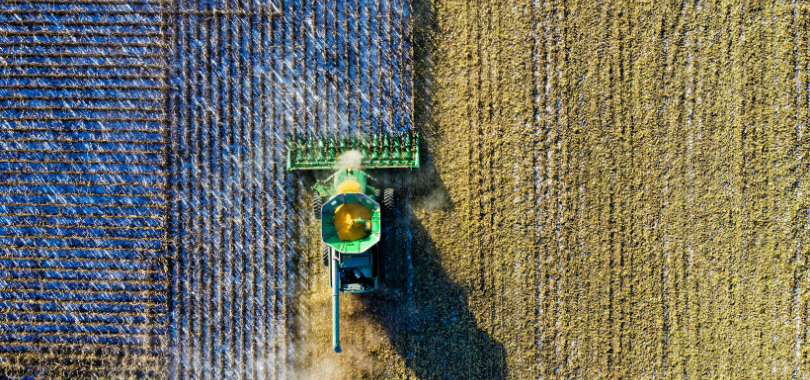KPIs in Agriculture: Sustainable Practices for Farmers

Image Source: Pexels | Tom Fisk
Agricultural practices have been continuously developing in the past years due to science and technology. However, progress comes with a cost. A 2021 study reports that food and agriculture are responsible for 25% to 35% of global greenhouse gas emissions.
Modern agricultural systems are different compared to organic farming systems. The former uses heavily agrochemicals that increase pollution and negatively affect the underground water supplies. Most nutrients in organic agricultural systems come from biological matter additions, including manure, compost, and cover crops. These supplements feed not only the plants but also the land’s microorganisms.
Technological advancements influenced the agricultural sector as well. A method to monitor the impact of technology on the agronomical field is the use of key performance indicators (KPIs). While designed to make farming efficient, modern machines require energy use and other resources that could generate high emissions levels.
By using KPIs in the monitoring process, every farm owner will be aware of both its positive impact on the environment and the damage it may cause. FAO estimates that emissions from animal agriculture represent 14.5% of annual anthropogenic greenhouse gas emissions. By measuring the inputs and outputs, farmers can control and implicitly reduce emissions.
According to The KPI Institute, a KPI is “a measurable expression for the achievement of a desired level of results in an area relevant to the evaluated entity’s activity.” In the agricultural sector, KPIs increase productivity and profitability, help manage daily operations, and contribute to informed business decisions.
KPIs in Farm Management
The increase in crop yields has been attributed to modern agronomy, plant breeding, agrochemicals such as pesticides and fertilizers and technical advancements but at the expense of ecological and environmental degradation. Selective breeding and advanced animal husbandry procedures have enhanced meat output, but these methods have generated concerns regarding animal welfare and environmental pollution.
Some of the KPIs that should be considered in the agricultural sector are:
- # Farm size
- % Irrigated farming land
- # Pesticides consumption
- $ Cost per hire
- # On-farm trials and demonstrations
- # Area of land cultivated
- $ Cost of harvesting
These KPIs support the decision-making process and give an evolutionary overview of the farm. For example, monitoring the farm size over the years shows the dimensional growth of the initial placement (storage spaces, land, stables). Knowing the percentage of irrigated farming land gives insights into future costs (water supply, irrigation system). It can help approximate the time until the entire surface will be properly irrigated. Cultivated land area and costs for harvesting insights can predict future harvesting costs of a larger (or smaller) surface. Monitoring pesticide consumption indicates the level of soil degradation, water contamination, and the risks of accidentally killing beneficial insects and non-target plants.
Meanwhile, it is important to note that each farm type has specific KPIs based on their characteristics, goals, and operations. For example, farmers on a dairy farm should consider monitoring:
- # Milk yield per cow
- # Milk flow rate
- % Dairy calves deaths under 1-month-old
- $ Daily cow replacement cost
- $ Concentrate cost per liter of milk produced
- # Cows managed per person employed
Agricultural Productivity and Costs
A 2022 study affirms that through accessing finances, the U.S. agricultural sector sequestrated more carbon in 2020 compared to 2019. Overall, U.S. greenhouse gas emissions decreased from 2019 to 2020 by 10.6%. Thanks to technological advancements and innovation, farmers and ranchers maximized their productivity while using the same quantity of inputs.When analyzing costs, a Market Intel article highlights that chemicals and fertilizer make up the largest share of on-farm expenditures, up to 17.5%. To optimize expenses and lower the contribution to environmental degradation, the use of these materials should be reduced.
In addition, a 2019 study concludes that effective scheduling of land preparation, plantation, and harvesting; use of early maturing crop varieties, seedbeds, and transplanting procedures for intensive land through crop rotation; selection of disease, insect, and weed control methods; and efficient irrigation and fertilizer use are all feasible measures to increase crop yield and production and revenue.
To monitor productivity and costs, farmers can use these KPIs:
- # Unit production time
- $ Energy costs per unit of production
- # Energy used per unit of production
- % Input waste materials
- # Production per day
FAO describes productivity “as a ratio of a volume measure of output to a volume measure of input use.” It can be determined at any geographical scale for a singular instance (farm, commodity) or a group of farms. Most ranches produce multiple commodities with many inputs that generate costs.
As previously said, advanced technological solutions that enhance productivity without increasing costs have emerged on the market. If the farmer does not have the finances to invest in these technologies, another solution would be to decrease the commodities types and increase the quantity and quality of produced items. This way, the brand focuses on a few product types, gains customers, and increases sales. While constantly developing a customer base, the commodities price could be adjusted to increase profit.
To acquire an in-depth understanding of KPI measurement challenges and ways to address them, join The KPI Institute’s certification program in KPI measurement. The KPI Institute provides toolkits, templates, case studies, and good practice examples from some of the world’s most successful firms, as well as thought-provoking exercises. Enrolled participants will also get free access to the smartKPIs.com premium content, the world’s largest library of documented KPIs.
The Certified KPI Professional and Practitioner course is available online and via face-to-face class in some regions. Read the full details and sign up here!



